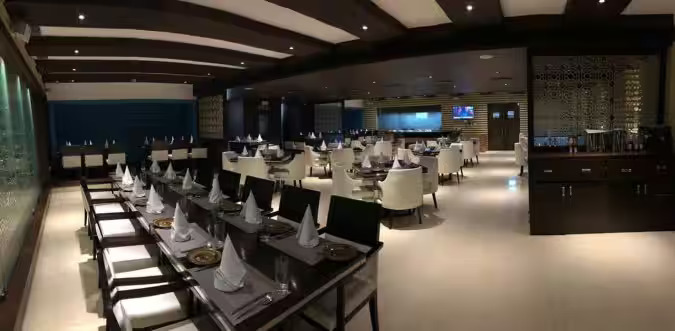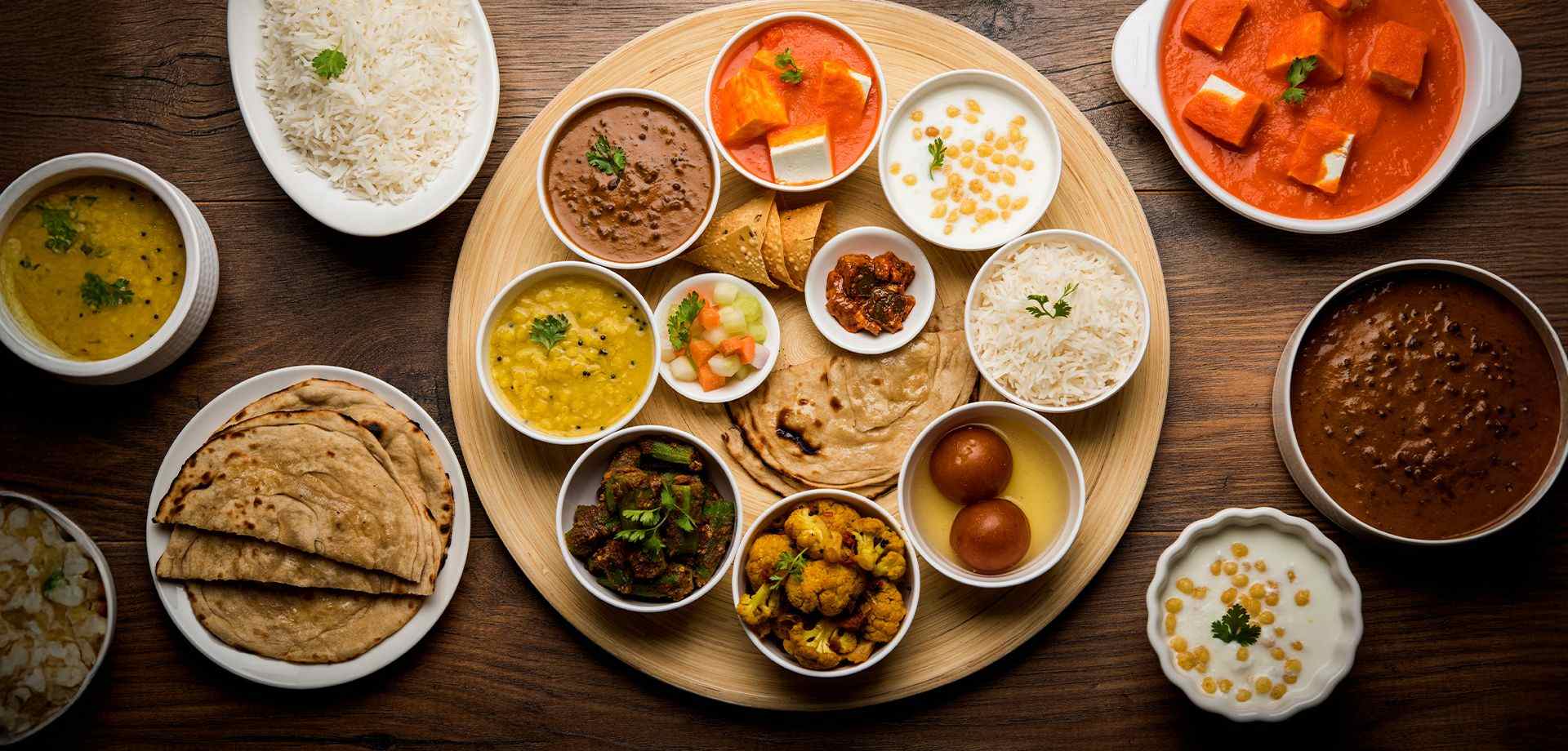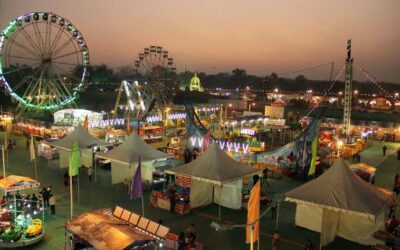The food culture of Gurgaon and Faridabad, two key cities in Delhi NCR, is a tale of contrasts and co-existence. On one hand, you have the colourful, loud, and bustling world of street food stalls offering affordable and flavourful snacks. On the other, you’ll find classy restaurants, candle-lit tables, gourmet menus, and fine wines in air-conditioned settings. While Gurgaon has made a name for itself with fine dining, Faridabad’s deep-rooted street food culture still holds its charm. Let’s explore how both cities offer a rich mix of food culture experiences, from plates under ₹50 to meals worth thousands.
Gurgaon: Where Food Meets Luxury and Local
Gurgaon, now known as Gurugram, has evolved from a quiet suburb into a corporate powerhouse. With the rise of high-rise apartments, global offices, and luxury malls came a boom in premium dining options. Yet, even with its five-star hotels and trendy microbreweries, the city’s local markets are full of street vendors serving chole bhature, momos, jalebi, and more.
Street Food in Gurgaon
In places like Sector 40 HUDA Market, Sadar Bazar, and Galleria, you’ll find the heart of Gurgaon’s street food culture. One popular stall, Raju Chole Kulche, is known for its fresh, spicy offerings under ₹200. You can smell the butter sizzling on tavas and see long lines forming around golgappa vendors and sweet shops.
Gurgaon’s street food culture reflects both tradition and modern twists. From deep-fried samosas to spring rolls with a desi touch, these stalls experiment constantly while still keeping the flavours close to home. Young professionals often grab a plate on their way back from work, enjoying the balance of taste, speed, and cost.
Fine Dining in Gurgaon
Luxury restaurants in Gurgaon are nothing short of world-class. At places like threesixtyone° at The Oberoi or Prego at The Westin, you’ll get imported wines, handcrafted cocktails, and menus curated by top chefs. There’s a growing trend of Pan-Asian, Italian, and fusion cuisines. These spaces are ideal for business dinners, romantic dates, or birthday celebrations.
Sector 29 is home to many microbreweries like Downtown and Prankster, where the vibe is casual but the food culture and drinks are top-tier. You can get gourmet burgers, wood-fired pizzas, and experimental Indian dishes here.
Faridabad: A Street Food Culture Haven with Growing Taste for Finer Things
Unlike Gurgaon’s fast-paced urban transformation, Faridabad has traditionally been more industrial and laidback. But don’t let that fool you — its street food culture scene is alive and kicking, and fine dining is gradually catching up.

Street Food Culture in Faridabad
Walk into Sector 12, 15, or 37, and you’ll be greeted by rows of stalls selling aloo tikki, kachori, chole bhature, and samosas, all priced under ₹50. These vendors have been around for decades, and their loyal customer base ranges from school kids and factory workers to office employees.
Evenings here are a visual treat, jalebi coils being fried in hot oil, skewers of meat sizzling over open flames, and chaats being topped with yogurt, chutney, and sev. The food is spicy, indulgent, and full of nostalgia. It’s quick, satisfying, and easy on the wallet.
Fine Dining in Faridabad
While not as expansive as Gurgaon, Faridabad’s fine dining scene is slowly growing. Hotels like Radisson Blu and Vivanta by Taj offer formal dining spaces with elegant decor, buffet spreads, and multi-cuisine menus. Broadway at Radisson Blu and Paranda, known for its Punjabi theme, are becoming favourites for family dinners and office parties.
There are also newer spots like Barbeque Nation, where the concept of grilling food on your table is a hit with large groups. Lounges and cafes like World Café cater to the younger crowd looking for weekend brunches and coffee dates.
Street vs. Fine: A Tale of Two Food Worlds
1. Affordability & Access
Street food wins when it comes to affordability. A full meal can cost less than ₹100 and still leave you full and satisfied. Fine dining, on the other hand, starts around ₹1,000 per person and is more about the experience than just food.
2. Social Vibe
Street food stalls are full of chatter, quick bites, and community vibes. You’ll find people standing around with paper plates, laughing, chatting, and sharing food. It’s informal and fun. Fine dining, in contrast, is quiet, intimate, and perfect for formal dinners or special occasions.
3. Quality & Hygiene
Fine dining spaces follow strict rules for cleanliness and service. Street food has improved in this area, with many vendors now maintaining better hygiene and even registering with FSSAI, but there’s still inconsistency depending on the vendor.
4. Taste and Variety
While street food brings bold flavours, nostalgia, and regional variety, fine dining gives you a chance to try global cuisines with finesse, from sushi and pasta to modern Indian reinterpretations.

5. Digital Influence on Food in NCR
With Swiggy, Zomato, and Google Maps, both street food stalls and fine dining places have entered the digital age. Even the golgappa stall uncle now takes orders via WhatsApp or gets rated on food apps. In Gurgaon, many street vendors have tied up with delivery platforms to increase reach, while Faridabad vendors are starting to do the same.
Fine dining restaurants are also offering delivery with special packaging, set meals, and cloud kitchens to serve customers at home. Social media, Instagram reels, and YouTube food reviews have become powerful tools in shaping where people choose to eat.
Final Bite: What Do These Two Cities Teach Us?
The food culture of Gurgaon and Faridabad shows us that India’s culinary scene is not just about elite vs. mass, it’s about choice. You could grab a ₹30 samosa in Sector 15 Faridabad for lunch and dine at a ₹3,000-a-plate Italian place in Gurgaon the same evening.
Street food culture is rooted in tradition, convenience, and community. Fine dining offers luxury, experimentation, and global exposure. Both are equally important to a city’s identity and offer different things to different people, at different moments.
In the end, whether you’re sitting on a plastic stool in Faridabad enjoying a plate of tikki chaat, or sipping wine under chandeliers in Gurgaon, the joy of food connects us all.




